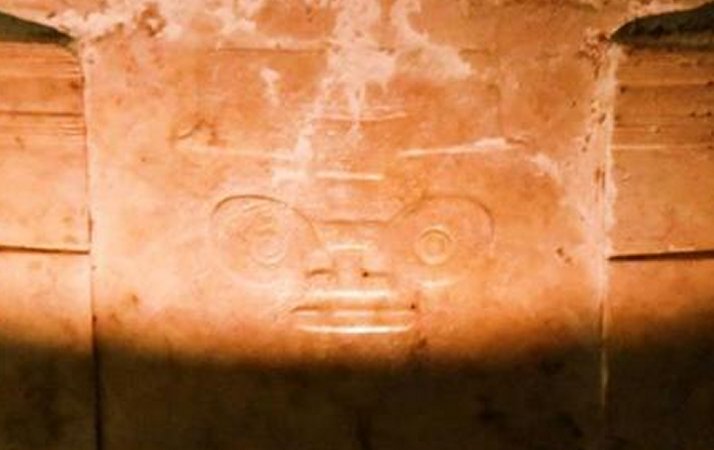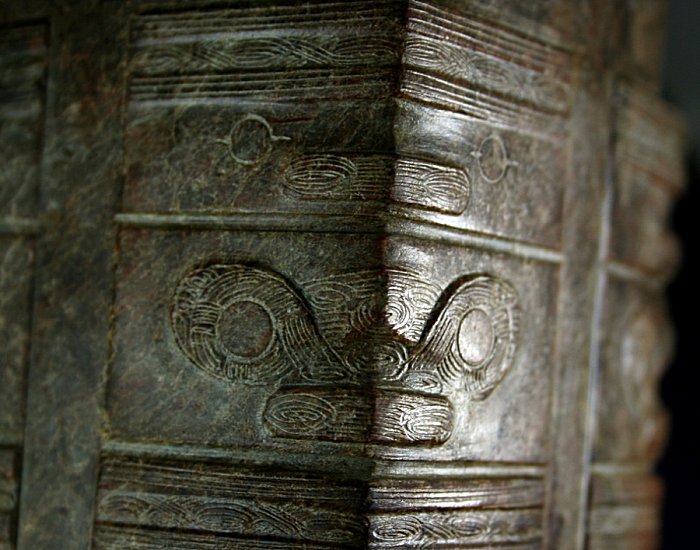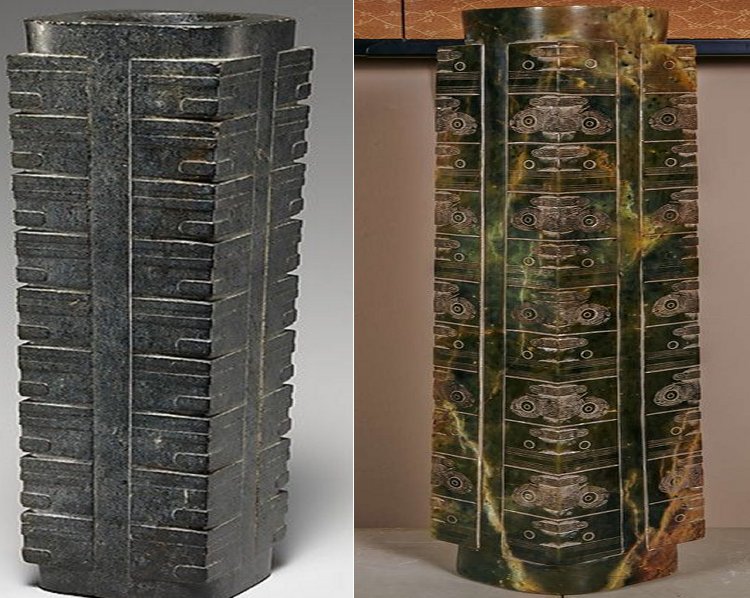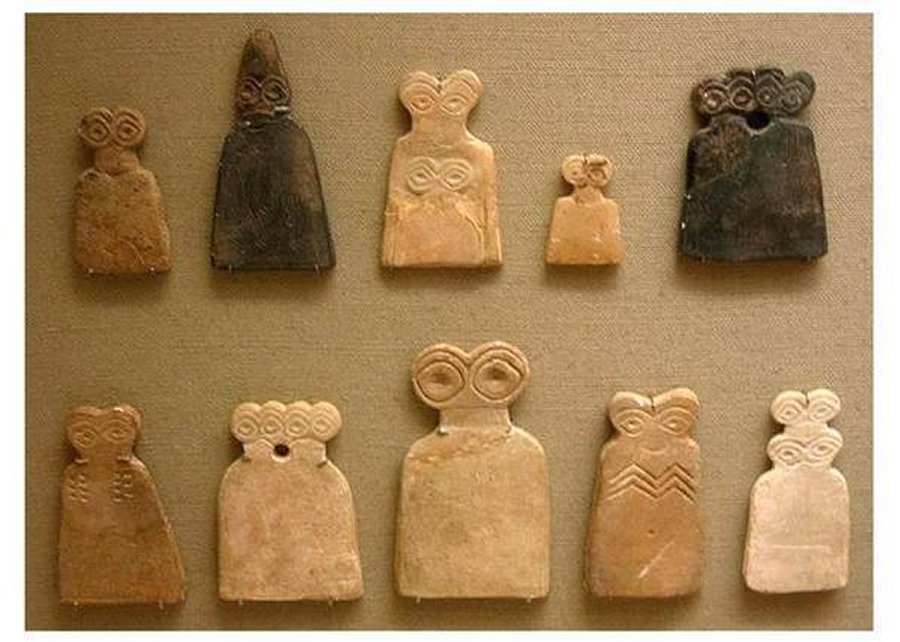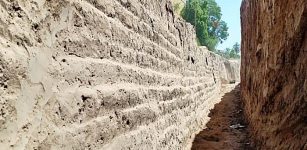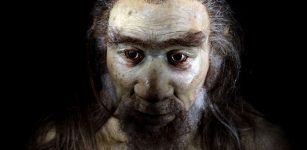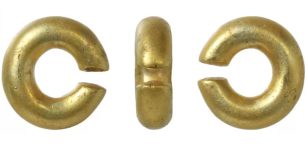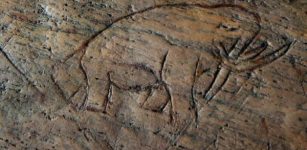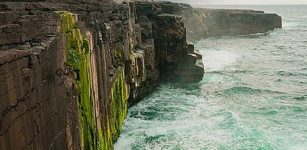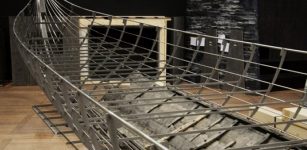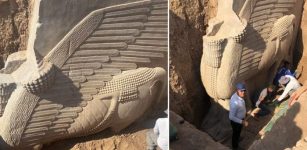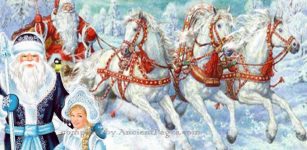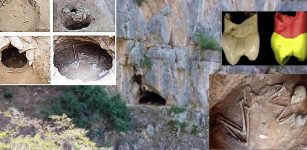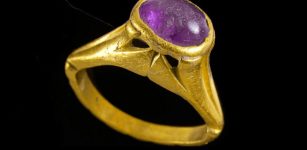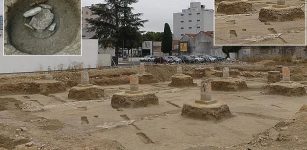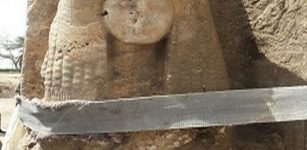Mysterious Ancient Figure Depicted On A Jade Cong May Re-Write History Of China
Conny Waters - AncientPages.com - There is a mysterious ancient carving on a jade cylinder kept in the Zhejiang Provincial Museum in the city of Hangzhou.
The strange figure is incised on a jade cong, one of the most perplexing ancient Chinese artifacts ever discovered that offers evidence our ancestors were familiar with advanced ancient technology. The purpose and function of the jade cong are still unknown.
While filming China’s Greatest Treasures, a new six-part television documentary series for BBC World News, Alastair Sooke noticed the curious figure grimacing figure wearing an elaborate feathered headdress riding on the back of a frightening monster.
Who was the person depicted on the cong? Was it a shaman, or an ancient god?
The mysterious ancient figure depicted on the jade cong. Credit: BBC
According to conventional history, China’s earliest recorded dynasty was the Shang, who ruled during the Bronze Age, in the 2nd millennium B.C.
As BBC reports, “intricate bronze artifacts – ritual food and wine vessels; ceremonial axes embellished with bloodcurdling, grinning faces – have been excavated from Shang cities in modern-day Henan province, along the Yellow River.
Many are decorated with the mask-like face of a monster with bulging eyes and curling horns known as a ‘taotie’, the precise meaning of which is still debated. Recent discoveries at Liangzhu, however, which is situated in the lower Yangtze River Basin, more than 600 miles (965km) southeast of the last Shang capital of Anyang, have upended the standard chronology of Chinese history.
What were these mysterious jade objects? Why were these artifacts so important to the ancient Chinese? Image credit: Guwan Soucang Chinese Antiques
This is because, according to archaeologists, the impressive ancient settlement at Liangzhu was home to a sophisticated civilization that was already prospering 1,700 years before the establishment of the Shang. Contemporaneous with the ancient Cycladic civilization of the Aegean Sea in the West, it was possibly the earliest state society in East Asia.”
Some scholars suggest “the origins of the famous Shang ‘taotie’ motif may be the gargoyle-like, frog-eyed monster that decorates artefacts from Liangzhu, including the ‘cong’ – which is known as the ‘king of cong’”.
Many extraordinary artefacts have been unearthed in the region, but their history remains shrouded in mystery.
See also:
Elongated Skulls: Did Intentional And Intriguing Ancient Tradition Originate In China?
Lady Fu Hao: Brave Warrior, Skilled Strategist, And China’s First Female General
Curious Giant Shaped Rock In China – An Ancient Man-Made Construction Or Natural Formation?
“In the past, Chinese scholars believed that the earliest dynasty to value jade was the long-lasting Zhou, which followed the Shang in the 1st millennium BC. The evidence from Liangzhu, though, suggests otherwise. And the ‘king of cong’ that I saw – carved from a pure, creamy-colored type of jade called nephrite – is arguably the most spectacular of all the Liangzhu jades. What struck me was how sleek and crisp and gracefully minimal it was – if you weren’t familiar with it and were told that it had been carved by, say, the 20th Century modern sculptor Constantin Brancusi, you wouldn’t bat an eyelid.
And the precise significance of that ‘man/beast motif’, as some art historians describe it? Well, in the absence of written records from the site of Liangzhu, scholars can only speculate. For now, we can’t be sure if the figure is a deity or a member of the Liangzhu elite – some of whom wore feathered headdresses – such as a shaman or priest. Or maybe, as Renfrew and Liu propose, the motif could be interpreted “in social terms, as representing the corporate community of Liangzhu town”.
In other words, perhaps the solution to the riddle of this puzzling design is that it is a kind of civic emblem, akin to a Western coat of arms.,” Sooke says.
Tell Brak idols. Image credit: collector-antiquities.com
It can be added that our ancestors often made depictions os beings with huge eyes. The remarkable ancient statues from the Eye Temple in Syria are an example of this and somehow they remind us of the mysterious being carved on the jade cong.
Written by Conny Waters - AncientPages.com Staff Writer

